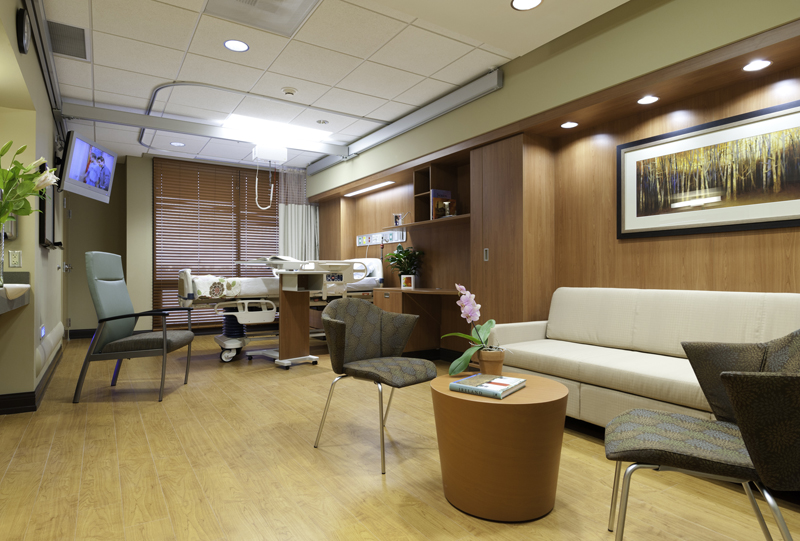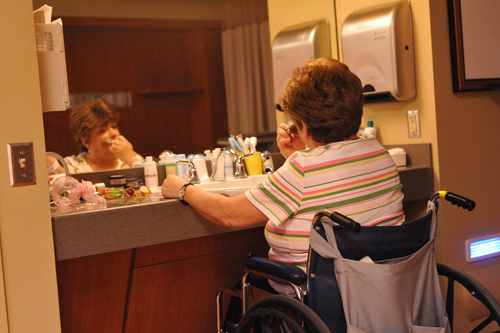Ettalynn Tracy of Brandon never wanted to spend nine days in stroke rehab.
But she's happy, at least, that her need for therapy coincided with the Feb. 24 re-opening of Methodist Rehabilitation Center’s remodeled stroke floor.
“Compared to other places, it’s like the Hilton,” she said. “I like everything about it. It’s so nice, so roomy and so clean.”
The renovation incorporates medical innovations and modern amenities that weren’t available when the fourth floor space was last updated in 1999. The result is a contemporary setting where the high-tech tools of rehab medicine go hand-in-hand with the comforts of home.
“A lot of thought and hard work went into creating an environment that would enhance the recovery of our stroke patients and help them achieve maximum independence,” said Mark Adams, CEO of the Jackson hospital. “Everyone involved in the project is proud of the transformation.”
The Jackson architectural/design firm of Canizaro Cawthon Davis married beauty and usability in the design of the 14 private and four semi-private rooms.
Wide-framed doorways allow easy wheelchair passage ¬and give the space an open, airy feel. Carefully angled lighting illuminates clinical examinations ¬and provides an inviting ambience. Fully accessible counters, sinks, showers and toilets safely accommodate people with disabilities. And the faux wood floors meet infection-control standards, yet offer a more home-like feel.
Soothing paint colors, comfortable furniture, room-size refrigerators and flat screen HD-TVs complement the cozy atmosphere. Plus, there is an abundance of closet space and a sleeping couch for family members. “You have plenty of room for people to come visit,” Tracy said. “And there is lots of storage.”
A variety of MRC staff members ¬ including physicians, nurses, therapists and rehab techs, contributed their expertise to the design process. Many also “test-drove” potential products for the rooms.
“It seemed like we sat on 50 chairs,” said Susan Greco, vice president for patient care services and program director at Methodist Rehab. “We even tried out several versions of the sleeping couch.”
Greco said the group’s input inspired a number of improvements that benefit patients and staff alike. An example is the addition of new lift systems throughout the stroke treatment area, and on the brain and spinal cord injury floors, as well. The equipment ¬– which ranges from ceiling-mounted models to freestanding units – bears the weight of patients as they transition from one position to another during therapy or in their rooms.
“We believe the lift systems will help patients feel more secure and prevent staff injuries,” Greco said. “Positioning and transferring patients is a major source of back and shoulder injuries among people who work in rehabilitation hospitals.”
Greco said the floor’s nursing station was re-designed to include two different counter heights – ¬a high one to ensure the privacy of patient information and a lower one to put wheelchair users on eye-level with the staff.
In the spacious gym, therapists have plenty of room to guide patients through their exercise routines or help them practice activities of daily living in a fully furnished kitchen, bedroom and bath.
“We have a very nice kitchen and dining room and spacious therapy and social areas,” Greco said. “We also have windows on both sides of the therapy gym and lots of natural light, which is good for everyone¹s mental health.”


